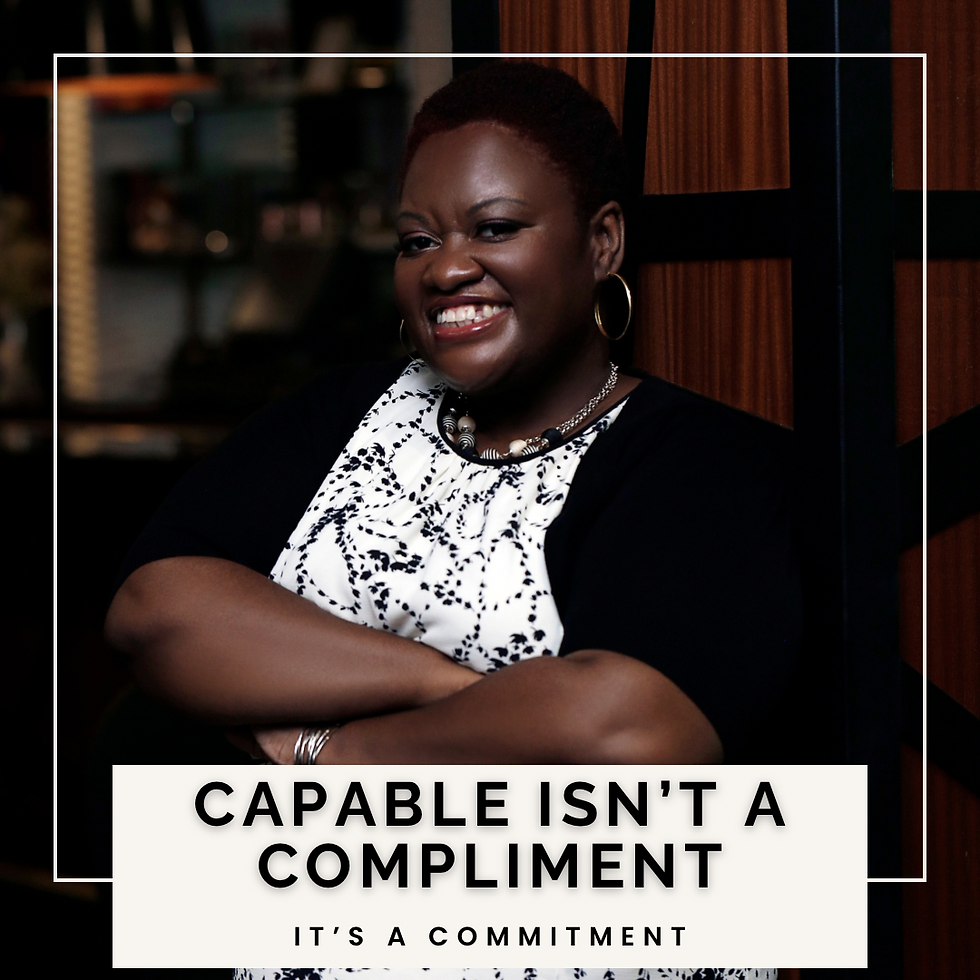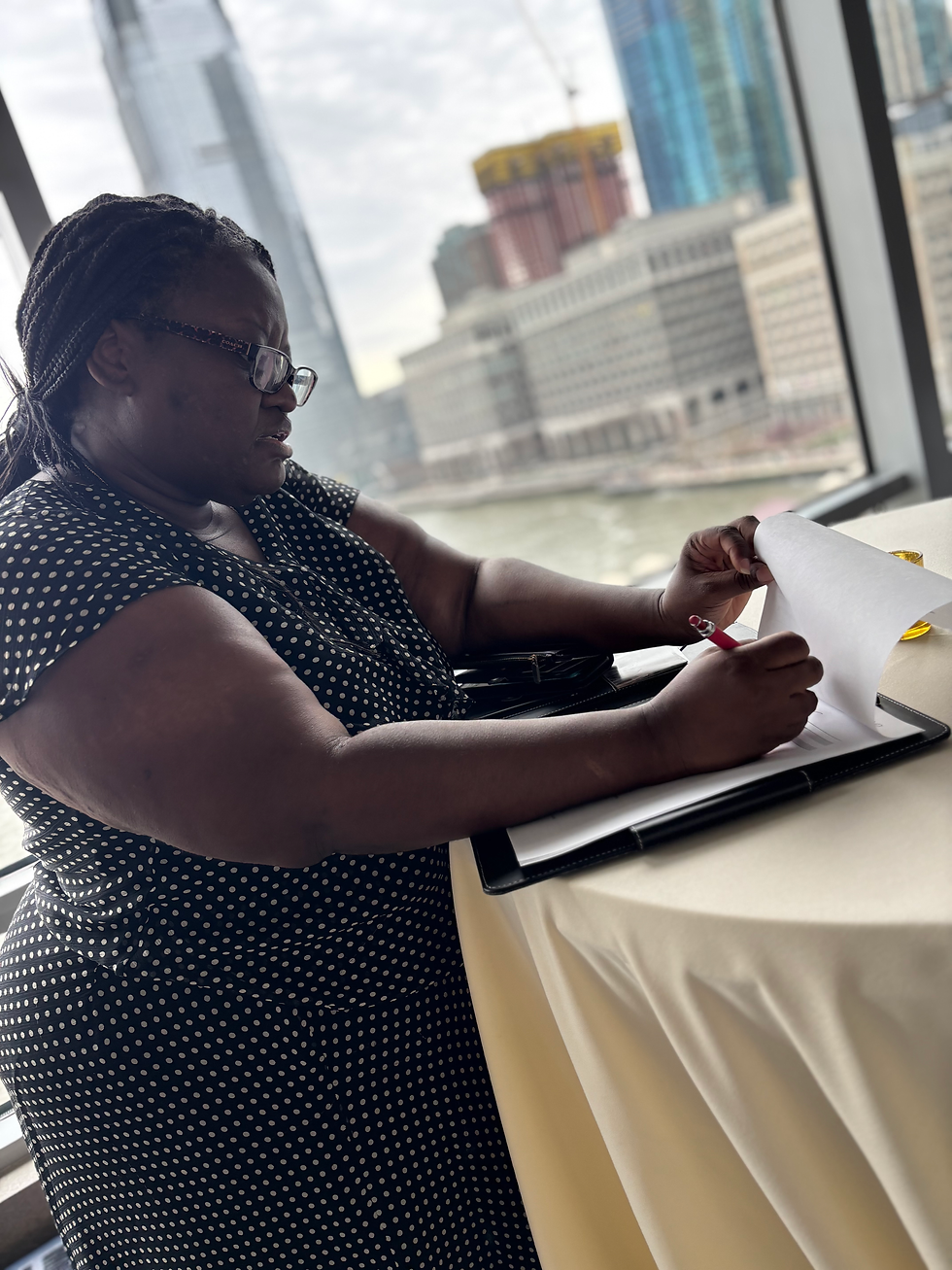What’s in an Invitation?
- The Capable Bride
- Jan 29, 2018
- 4 min read

Can you remember a time when you received a wedding invitation? You most likely knew the couple was engaged or you may have already known the date of the wedding, but somehow receiving the invitation in the mail made it official. You couldn’t wait to open the envelope to digest not only the logistics but the look and feel of the invitation. I remember being curious about what colors and style was chosen, which type of font, and the words chosen to describe their union. I saw the invitation as a gateway to what I should expect the wedding to be. Take a moment and think about it. All of these emotions, expectations and planning happen upon the receipt of your invitation.
A wedding invitation is not only your first official wedding communication but it also sets the tone to your wedding. For example, elegant and classic styles give the sense of tradition, history, long lasting family. Rustic makes me think of vibrant colors like yellows and oranges as well as earth tones like brown or burnt oranges whereas vintage evokes blue, grey and green. The time of your wedding will also have guests thinking about the appropriate attire. The invitation can also influence they type of wedding gift you recieve or how much your guest spends on you. Wedding invitations can ignite all kinds of feelings and thoughts. So what do you want to say with yours? Lucky for you there are thousands of combinations of styles, colors, fonts, images and papers to choose from.
Now let’s talk about what an invitation includes: An “all-in-one” invitation typically includes the invitation card, response postcard and a blank stamped envelope for your response card. Getting response cards back is vital to everything you plan including the menu, guest seating, dinner choices, cake ordering and not to mention your budget. Including a stamped response card will lessen the likelihood of someone putting the card to the side and forgetting about it because they now have to purchase stamps. The “all-in-one” invitation is great and I would say almost necessary for medium to large weddings. For smaller weddings a postcard or online invitation can be all you need if you already know who will be attending or if you can easily communicate with all of your guests. Online invites can also be an easy way to communicate any changes or logistical information if you’re having a destination wedding.
What’s in an invitation: According to Heather Lee and Kristi Kellogg, in an article written for Brides.com, a wedding invitation should including the following:
Who's hosting
The request to come to the wedding
The names of the bride and groom
The date and time
The location
Reception information
Dress code
Separate RSVP card
Who’s Hosting - typically this is reserved for the bride’s parents who would traditionally pay for the wedding but both sets of parents can be included; especially if everyone is contributing. If everyone, including the bride & groom are paying (which is more typical these days) you can say something like Lee and Kellogg suggest “Together with their parents, Emma and Jax request the pleasure of your company….”
Can include options like “the pleasure of your company”, “would love for you to join them, request the “honor of your presence” etc..
Names of the Bride and Groom
“Traditionally the name of the bride always precedes the groom's name. Formal invitations issued by the bride's parents refer to her by her first and middle names, the groom by his full name and title; if the couple is hosting by themselves, their titles are optional.
For a same-sex marriage, of course, the traditional rule of woman first and man second isn't applicable. You can choose to go in alphabetical order or choose what sounds better. Whether it's ‘Emily and Zara’ or ‘Zara and Emily,’ it's going to be lovely either way.?
Date and Time
Numerals should not be used for very formal weddings. All numbers should be written out. Numerals are okay to use for more casual weddings.
The Location
Unless it will cause confusion, the street address should not be used. You should also not use acronyms. Instead write out the city and state.
Reception Information
“Very formal invitations include this information on a separate card. Otherwise, it can be printed on the wedding invitation itself if there is room; if the ceremony and reception are held in the same location, you may print "and afterward at the reception" or "reception immediately following." When the reception is elsewhere, the location goes on a different line. Include the time if the wedding reception is not immediately following the ceremony.”
Dress Code
“Wedding invitation etiquette dictates that the dress code, if it's to be included on the invitation, is in the lower right hand corner of the invitation. If you don't include a note on attire, the invitation will indicate the dress code. For example, if the invitation is very fancy, guests will likely anticipating a formal, black-tie affair, or conversely, if the invitation on the simpler side, that indicates a more casual dress code.”
Separate RSVP Card
“Most couples choose to include a separate response card for guests to fill out and return in the mail. You also have the option of having people RSVP via your wedding website. If that's the case, include the website address on a separate card, just as you would with an RSVP card, and indicate that guests can let you know if they can come directly on the site.”
My biggest takeaway for you is no matter what you decide on, make sure and give your invitation the priority it deserves. Make sure it speaks to your style and the feel you want your guest to prepare for.




Comments